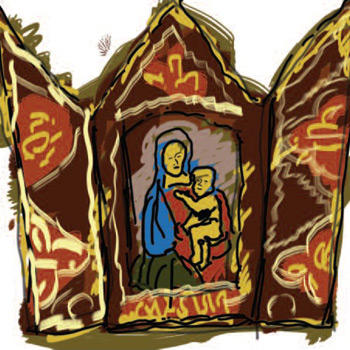 Like Butterfly McQueen in Gone with the Wind, I know nothing about birthing babies. After all, my children arrived via transcontinental jet.
Like Butterfly McQueen in Gone with the Wind, I know nothing about birthing babies. After all, my children arrived via transcontinental jet.
But there was a time when I considered midwifery as a vocation. (I also considered clown school, but that’s another story.) And seminary did not diminish my interest in life transitions — the Word made flesh, for example, is not an abstract concept, but who can grasp it? Other overarching themes captured me as well: birth and rebirth, baptisms and funerals and their connections, and all of creation groaning in labor.
Every single day of ministry has brought opportunities for further reflection. For example, during a stint as a hospice chaplain, I often likened my role to that of midwife, with a few obvious differences — like on which side of the event I stood.
So when my daughter informed me that she was going to make me a grandmother, out came my old midwifery books as I prepared to help her have the most amazing birthing possible. My daughter is rather young and knew rather less than my “nothing,” but she was game and happy for the attention as I planned to use my massage skills throughout her labor, to distract her with family stories between contractions, and to put the whole thing within a structure of prayer.
Her labor started early on a Monday morning, gathering momentum in fits and starts. In the evening, we took her to the hospital, an hour’s drive away, but they sent her home because she wasn’t progressing fast enough for their taste.
A longish night ensued, and we finally got her admitted early the following afternoon. After the nurse asked, “Would you like an epidural?” she hesitated perhaps a fraction of a second. Ten minutes later, she was sound asleep, making up for what she’d missed during the night.
That’s pretty much how she spent the rest of her labor. Had I massaged her, she wouldn’t have felt it. I told her stories which might or might not have penetrated her dreams. I did most of my praying at the hospital Starbucks, although a tiny fold-open traveling icon of Jesus and Mary was open on the windowsill of her room throughout. (Father Tom Hopko of St. Vladimir’s Orthodox Theological Seminary gave it to me years ago.)
When they woke her to check her dilation, she was ready to push, which she did about five times while I held her anesthetized leg. Then Adam Lamont emerged alert, engaged, big footed and beautiful. It was an amazing birth.
Do I regret all the preparations for what didn’t happen? Not a bit. Nothing is lost in God’s love. The bonding, the information gained, the opportunity to be present at a profound moment even though it looked nothing like I had expected — all gift.
All this is easy to say from a personal perspective. But what happens when an institution prepares oh-so-carefully for a well-researched future that turns out to be, well, different than anticipated? What of the great plans that just don’t meet current needs?
Institutions don’t turn on a dime, but the times call for quick decisions about what to let go and what to keep for another day. How do you regroup, cut losses, and maintain perspective?
There are no easy answers, but there is a simple one. Remember that although we are called to prepare, we are not in charge of the largest things. They will unfold in God’s good time. It is for us to celebrate the gift of participation in whatever form the future takes.